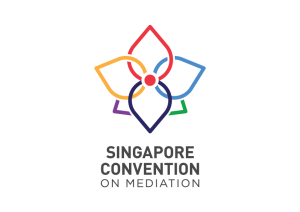Mediation has been actively promoted by the government and the courts. In asking disputants to first mediate, the aim is to help them achieve an amicable, efficient, and practical solution. As a result of these policy adjustments, advocates need to rethink their duties and toolkits when approaching dispute resolution.
At the recent “Advocacy Best Practices in Hybrid Dispute Resolution Processes” seminar jointly organised by TSMP Law Corporation and Sage Mediation, our panellists Senior Judge Andrew Ang, Mr Thio Shen Yi, SC, and Professor Joel Lee – shared some of their thoughts on what the modern advocate’s toolkit should contain.
Prof. Joel Lee started with an overview of the development of mediation in Singapore; and noted that it was now arguably entering its fourth phase. Mediation practice in Singapore had matured since it was first formalised in the judicial system in 1994. Between then and 2007, significant efforts were made to build strong institutional infrastructure to support mediation practice. From 2007, the institutions worked collectively to encourage advocates to bring their clients for mediation, and a key example is the Practice Direction that cautioned advocates on cost sanctions if they pulled clients out of mediation without reason or failed to engage in mediation in good faith.
Prof. Lee then introduced the third phase – as mediation began to gain traction, Singapore moved to internationalise its mediation services to serve global clients. To this end, the Singapore International Mediation Institute and Singapore International Mediation Centre were launched in November 2014. Subsequently, when the UNCITRAL Convention on Mediation was signed in Singapore in August 2019, the use of mediation was further legitimised. The industry seems to be in this phase presently, where the challenge is to define the standards of mediation practice and enable its appropriate use beyond Singapore.
Crucially, Prof. Lee believes that clients will now be best served by the ‘Renaissance Lawyer’, especially against the backdrop of modern socio-economics, which guides the current phase of development. This ‘Renaissance Lawyer’ should possess a wide range of skills that can be adapted to fit the complex needs of clients. Lawyers, therefore, have to be competent in, and prepared to rely on a range of dispute resolution processes.
Echoing his agreement, Mr Thio Shen Yi, SC added that smooth ‘code-switching’ enables success in hybrid advocacy. An effective advocate should be mindful of their key audience in the different dispute resolution processes. Thus, they ought to be able to switch their persuasion-code from one that emphases pathos (in mediation) to one of ethos and logos (in arbitration or litigation).[i] Such adaptability assures clients that their best interests would be achieved in a carefully tailored dispute resolution process.
Apart from broadening skillsets, Mr Thio noted that the increased sophistication of clients meant that advocates should invest more effort in client engagement and preparation. While there is no definitive way to prevent disputants from destructive behaviours, advocates can keep clients open to new perspectives and ideas before embarking on mediation. Therefore, with the growth of hybrid advocacy, advocates will be measured by their ability to collaborate, persuade, and originate.
Yet, apart from client management, advocates can play their roles well by managing their own behaviour. Reflecting on his experience as a mediator, Senior Judge Andrew Ang shared that the good mediation advocates he encountered stayed focused on helping clients achieve a settlement. This disposition and focus spurs advocates to look deeper into the root causes of the dispute and prevents them from falling into the trap of superficial positional bargaining.
Additionally, regarding their mediator as an ally is another positive way in which advocates can conduct themselves. Justice Ang further adds that finding the right mediator is the very first step. Advocates should work with the mediator to design a process that matches the client’s cultural and contextual backgrounds, help develop rapport with the mediator, and significantly, work with the mediator to achieve an outcome that satisfies the client.
Finally, to best manage the modern client and meet their needs, advocates are pushed to re-think their own concepts of what counts as a win and what defines ‘good lawyering’. Rather than restrictive, fixed understandings of concepts like ‘fairness’, advocates should consider what outcomes would be most practical and sustainable for their client. This exercise enables advocates to explore the fullest possibilities that mediation unlocks, and ensures genuine commitment to the process.
As economic activity recovers in post-pandemic Asia, cross-border disputes will only grow in volume and complexity. Professionals in various fields have diversified their skillsets to respond to these trends, and legal professionals will not be shielded from the need to similarly evolve and expand our skillsets. In the knowledge economy of today, a continued and indeed, continuous renewal of one’s appreciation of best practices in negotiations both in-person and on digital platforms will contribute meaningfully to successful outcomes.
Reference:
[i] Based on Aristotle’s Modes of Persuasion. Pathos or emotional appeal was to appeal to the audience’s emotions. Ethos or ethical appeal was to convince on the author’s credibility or character. Logos or logical appeal was to convince based on logic and reason.




